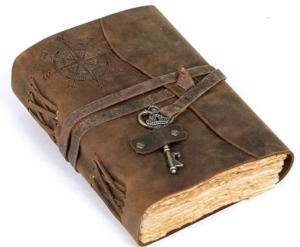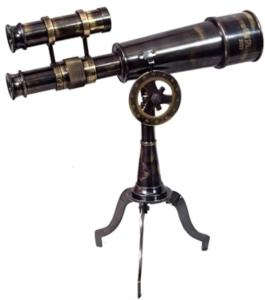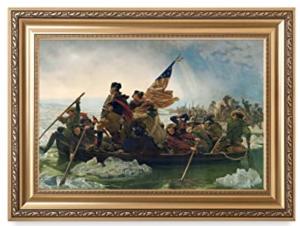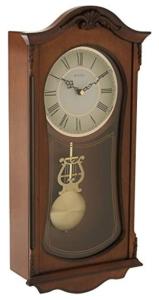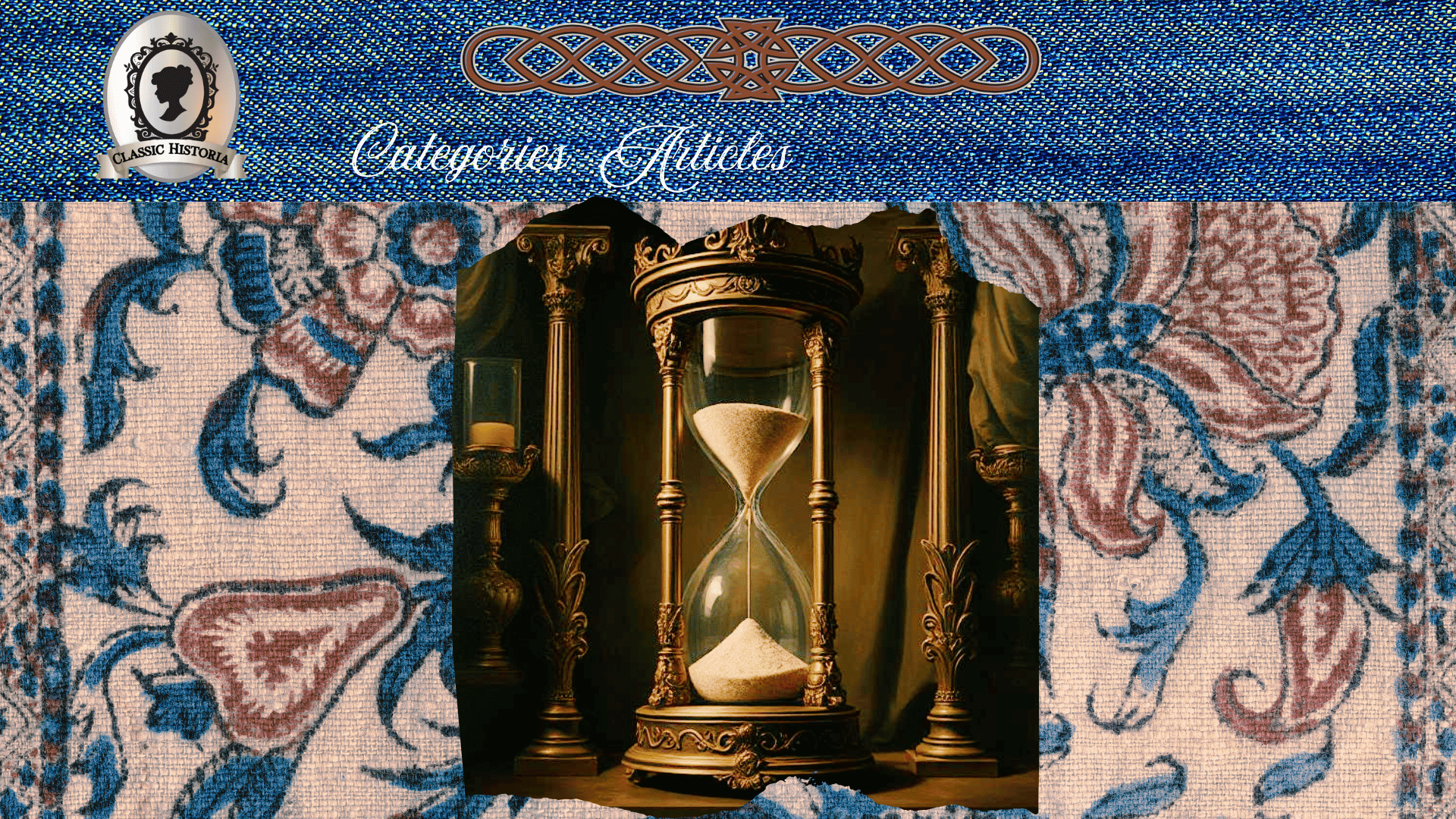
Classic Historia may receive a commission on purchases made through Amazon and eBay affiliate links at no additional cost to you.
An hourglass measures time by allowing sand to flow from one chamber to another at a consistent rate, offering a visual representation of time's path. But how much do we know about the history of this fascinating invention? Where did it originate? Why was it so popular, and what role did it play in history? For historians and general readers alike, the history of the hourglass offers insight into the ingenuity of past civilizations and their approach to measuring time.
The hourglass was primarily designed to measure shorter intervals, such as a half hour span, making it an essential tool for tasks that required approximate timing. Its simplicity and reliability made it widely popular for maritime navigation or duration of work. On the other hand, the mechanical clock provided a broader perspective by dividing the day into 24 hours, offering a comprehensive view of the movement of the sand. Together, these two instruments highlighted the ingenuity of their eras, serving complementary purposes in humanity's quest to organize and understand time.
The Origin of the Hourglass
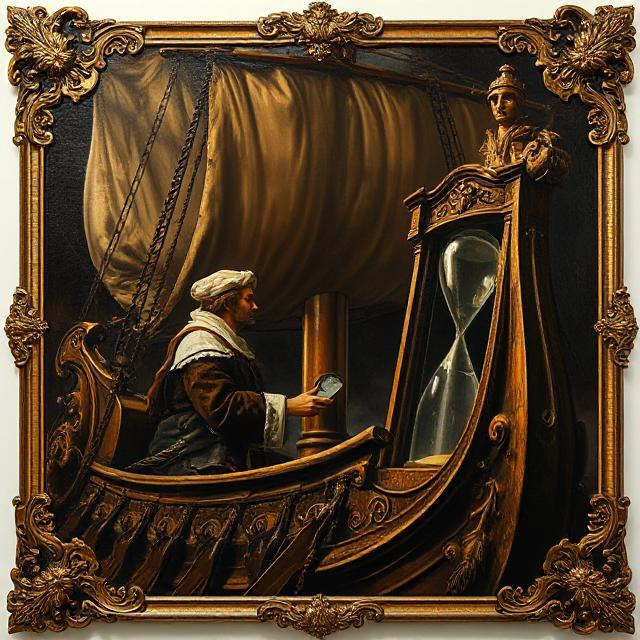
The hourglass, also known as a sandglass or sand timer, is believed to have originated in Europe around the 8th century. Its invention is often attributed to the increasing need for a reliable and accurate means of measuring time during this era. However, there is limited evidence about its exact origins. The hourglass became more prevalent by the fourteenth century, largely due to its practical applications in various activities. For instance, in maritime history, it was used for navigation to measure time intervals during ocean travel. The first hourglass's introduction marked a significant step toward refining time measurement and brought an innovative alternative to earlier methods like water clocks and sundials.
The Hourglass as a Time Monitor
The hourglass design consists of two glass bulbs connected by a narrow neck that allows sand to flow slowly from one bulb into the other. By controlling the amount of sand in each bulb, an hourglass can measure various time intervals accurately. However, unlike modern clocks or watches, it does not display exact measurements but rather approximations. This is due to several factors, such as variations in grain size and humidity, that can affect the rate at which sand flows through the neck.
While hourglasses were limited to providing approximations for measuring the amount of time, the invention of mechanical clocks played a pivotal role in timekeeping by introducing a new level of precision and reliability. Unlike hourglasses, which rely on the consistent flow of sand, mechanical clocks operate through intricate gears, springs, and pendulums that allow them to measure time down to the exact second. This made them invaluable for tasks requiring precise scheduling, such as navigation and coordinating events. On the other hand, hourglasses were often used for shorter time intervals, such as timing speeches or ship logs, where approximations sufficed. Thus, while both served as important tools for timekeeping, their uses, and accuracy highlighted the technological advancements of their respective eras.
Sand Glasses: Versatile and Timeless
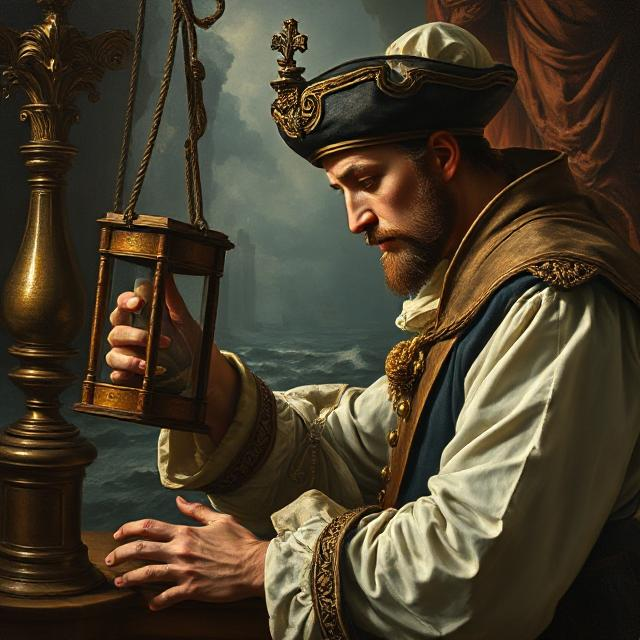
Hourglasses performed a significant role and were used for many different purposes throughout history. In the 15th century, they were primarily used to time sermons for religious ceremonies in monasteries. However, their reliability and portability made them useful in other spheres as well. Hourglasses became essential tools for military for keeping track of soldiers’ shifts, cooking times for brewing, or scientific studies.
Where Was the Hourglass Popular?
These sand clocks quickly found its utility in various regions and industries. It became extremely popular in Europe, particularly aboard ships and in monasteries.
At Sea: On sailing ships, hourglasses provided reliable measurements of time, even in conditions that rendered other tools, such as water clocks, impractical. Seafarers favored hourglasses because they were unaffected by temperature changes, like humid days, or the rocking motion of the ship.
Monasteries and Churches: Hourglasses were also used to segment specific periods of religious practices, such as preaching or prayer times, ensuring precise adherence to canon law.
Daily Life on Land: On land, hourglasses were popular as inexpensive tools for common people, often used to measure cooking times, work breaks, or other everyday tasks.
$570.06
4.89 out of 5 starsSan Felipe Medium Ship Model - Fully Assembled
A Stunning Display Piece That Captures the Essence of Maritime History for Any Home or Office
Product information
Product Review Score
Product links
Why Was the Hourglass Used?
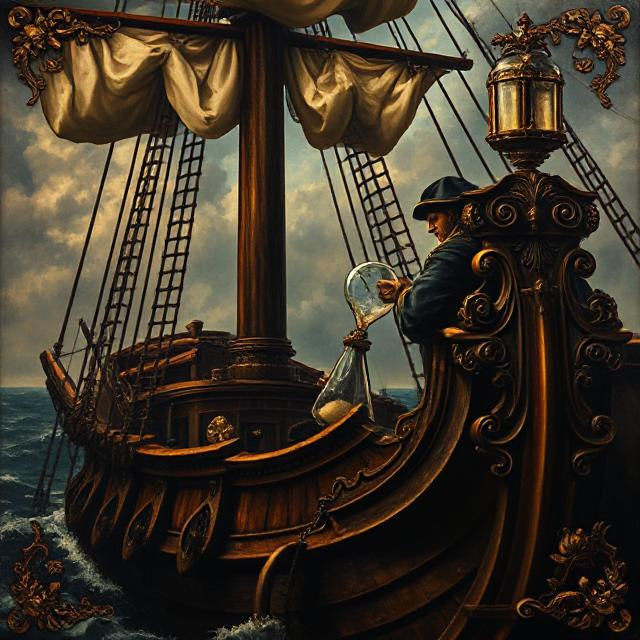
The hourglass wasn’t just convenient—it was practical. Here are some of the key reasons for its widespread use in the Middle Ages:
- Simplicity and Low Cost: Compared to mechanical clocks, hourglasses were far easier to construct and maintain. This affordability made them available to the general population.
- Reliability: The sand’s flow was independent of external factors like motion or temperature, making it dependable on ships and even in colder climates.
- Ease of Use: To reset the hourglass, one simply flipped it over. Unlike wax candles or other timekeepers, it didn’t vanish after each use.
Despite its practical advantages, the hourglass did have its limitations. Precision was lacking—you couldn’t use it for tasks requiring exact calibration because the sand flowed unevenly. Most notably, the duration measured by an hourglass was short—typically around an hour at best.
Interesting Note: Present-Day Hourglass Designs
Hourglasses have evolved far beyond their practical roots to become decorative and symbolic objects in modern times. Today, they are crafted in various intricate designs, merging functionality with artistry. One particularly striking element featured in present-day hourglass designs is the incorporation of Gothic aesthetics. Gothic-inspired hourglasses often showcase ornate metal frames, intricate carvings, and pointed arches reminiscent of medieval cathedrals. These designs frequently use dark tones or incorporate stained glass accents, creating a facet of mystery and elegance. The blending of modern craftsmanship with historical motifs has transformed the hourglass into a timeless piece that resonates with both history enthusiasts and contemporary collectors.
A Lasting Legacy of the Hour Glass
By the 16th century, the sand timers started to decline in everyday use, replaced by increasingly accurate and accessible clocks. Yet, it didn’t disappear entirely. Today, hourglasses are primarily decorative, though they are still used symbolically and occasionally in practical ways, such as in board games.
For history enthusiasts, the hourglass represents more than a simple device—it is a tool that captures humanity’s ingenuity, practicality, and symbolic use. Its humble beginnings as a “poor man’s clock” highlight its accessibility, and its lasting cultural impact reminds us of the timeless stories it continues to tell.
Interesting Fact: The Grandfather Clock
Grandfather clocks, also known as longcase clocks, first gained prominence during the Age of Discovery in the late 17th century, within the Baroque era. They were crafted with intricate woodwork and elegant designs, reflecting the artistic sophistication of the time. These clocks were revolutionized by the invention of the anchor escapement mechanism, which allowed for greater accuracy in timekeeping. Their towering presence not only served as functional timepieces but also as symbols of wealth and status in households of the era.
$140.00
4.59 out of 5 starsElegant Wooden Chime Wall Clock by Bulova
A Timeless Piece That Adds Charm and Sophistication to Any Space While Keeping You on Time
Product information
Product Review Score
Product links
Innovation Elements of Time Throughout the Centuries
|
Century |
Innovation |
Description |
Impact |
|---|---|---|---|
|
Ancient Times |
Sundial |
Used the position of the sun to indicate the time of day. |
Enabled early civilizations to organize daily activities. |
|
3000 B.C. |
Water Clock (Clepsydra) |
Measured time by the flow of water between containers. |
Provided a reliable time-measurement tool for both day and night. |
|
3rd Century |
Hourglass |
Measured time with flowing sand inside a glass vessel. |
Portable and reliable tool for specific time intervals, gaining cultural and symbolic significance. |
|
14th Century |
Mechanical Clock |
Used gears and weights to tell time, often located in public spaces. |
Revolutionized timekeeping with greater accuracy and visibility to communities. |
|
17th Century |
Pendulum Clock |
Introduced the pendulum clocks mechanism, drastically improving accuracy. |
Marked the first step of precision timekeeping. |
|
18th Century |
Pocket Watch |
Miniaturized mechanical clocks for personal use. |
Timepieces became a common sight, bringing timekeeping to individuals and transforming daily life and personal routines. |
|
20th Century |
Quartz Clock |
Utilized quartz crystals to maintain track of time accuracy. |
Made accurate, affordable timekeeping accessible to the masses. |
|
20st Century |
Atomic Clock |
Measured time based on vibrations of atoms, achieving unparalleled precision. |
Modern time is essential for GPS, telecommunications, and scientific research, defining the flow of time in modern times. |
Interesting Fact: The Atomic Clock
The atomic clock is an advanced timekeeping device that measures time based on the vibrations of atoms. Examples include the strontium and cesium clocks. Rubidium is another type of atomic clock, but it's not as accurate as cesium. Unlike traditional mechanical or quartz clocks, atomic clocks harness the consistent oscillation frequencies of atoms to provide unparalleled precision. These clocks are so accurate that they can measure time to within billionths of a second, or trillionths of a second (picosecond). Atomic clocks are critical for a wide range of modern technologies, including GPS navigation, telecommunications, and scientific research, ensuring functionality and synchronization on a global scale. Their advancement has redefined the standards of timekeeping in the 20th and 21st centuries.
For example, atomic clocks maintain precise records of stock market transactions between buyers and sellers, ensuring timing accuracy to the millisecond or better, which is especially critical in high-frequency trading. This level of precision is essential to prevent illicit trading practices, such as trading ahead of time, while also promoting fairness for traders worldwide.
Conclusion
The history of time tracking reflects humanity's constant pursuit of measuring and mastering time with increasing precision. The hourglass, a critical invention of the medieval era, set the stage for evolving advancements in timekeeping technology. From mechanical clocks to atomic clocks, each innovation has fundamentally transformed our understanding of time and profoundly influenced the way we live, work, and connect. The hourglass remains a symbol of the progress of time, reminding us of both its fleeting nature and its enduring progress in our lives.
Like this article? Discover more at Classic Historia for a deeper exploration into the past that has shaped our world.
Stay connected with Classic Historia and discover more timeless treasures by following us on our social media platforms:
Business Phone Number:
(833) 222-7544
Business Address:
Classic Historia
1220 Oak Street, Suite J PMB1007
Bakersfield, CA 93304-1072
United States
